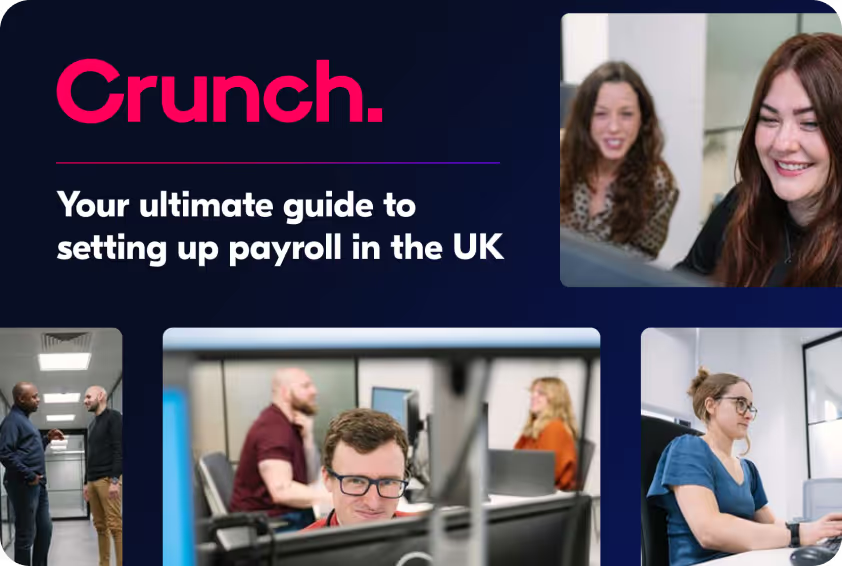Are you a UK investor who’s experienced the ups and downs of the crypto market? If so, you’re not alone. The past few years have been a rollercoaster, with dramatic swings and unexpected twists leaving many investors facing losses. But here’s the silver lining: those losses could help you reduce your tax bill through a strategy called tax loss harvesting.
In this blog, we’ll explore capital gains and smart tax strategies, showing you how to turn your crypto losses into a valuable advantage.
How do Capital Gains Tax rules apply to Crypto?
HMRC have confirmed that capital gains tax rules apply to crypto investments. So, when you dispose of a crypto asset by selling it for fiat, trading it for another crypto, spending it or gifting it (except to a spouse/ civil partner) you’ll incur a capital gain or loss.
- A capital gain is the profit you make when you sell something for more than you originally paid for it.
- A capital loss is the opposite: it's when you sell something for less than you paid for it, resulting in a loss.
When working out the gain or loss, you need to carefully follow the matching and pooling rules to ensure the correct purchase cost is set against the disposal.
All UK individuals are entitled to the annual exemption for capital gains (£3,000 for the 2025/25 and 2024/25 tax years), but are required to pay tax on gains that exceed this allowance. To reduce the tax bill, capital losses offset capital gains that are realised within the same tax year. Where there is a net loss for the year, these losses are carried forwards to set against future capital gains.
What is Tax Loss Harvesting?
Tax loss harvesting is the process of selling an investment, like crypto, that has lost value to offset capital gains from other investments, with the goal of lowering the taxes you owe. If your crypto holdings have taken a hit, then tax loss harvesting could be a smart move to reduce your tax bill for the year. In the UK, unused capital losses are rolled forward indefinitely, so this action could impact your tax bill in future tax years too.
{{tax-guide}}
How to realise and claim a capital loss on your Crypto
Understanding the difference between an unrealised loss and a realised loss is key.
- An unrealised or hypothetical loss: when an asset you own decreases in value, but you haven't sold it yet.
- A realised loss: occurs when you have actually disposed of the asset at a lower price than your matched acquisition cost.
To claim a loss on your crypto assets, you need to turn that hypothetical loss into a realised one by disposing of the crypto or making a negligible value claim. If your crypto has become worthless, you may be able to make a negligible value claim, but HMRC must agree and you would have to make a claim for all tokens in the same pool. For this reason, disposing of the crypto asset by simply selling it, trading it, or spending it can be more straightforward.
The capital loss is the difference between what you sold the asset for and what you originally paid for it (subject to the pooling and matching rules). This loss can be claimed on your Self Assessment Tax return for the relevant tax year or by writing to HMRC, if you don't need to file a return.
Important considerations
Here are some important things to keep in mind about capital losses:
- There's no limit to the amount of capital losses you can use to offset your gains, but you need to be able to show HMRC the details. Keeping accurate records is essential.
- You must claim your losses within four years of the end of the tax year when they occurred. Once this time passes, you can't claim them anymore.
- Watch out for the "bed and breakfasting" rules: if you buy back the same crypto asset within 30 days of selling it, the new purchase price is used to calculate any gains or losses. This could affect your ability to realise the expected capital loss.
Can NFTs be used for tax loss harvesting?
Yes, the same capital gains tax rules apply for Non-Fungible Tokens (NFTs), so when you dispose of an NFT at a lower value than acquired, that loss can be used to offset capital gains in the same tax year. Unlike normal crypto assets like Bitcoin, which are fungible tokens, NFT’s are not subject to the pooling and matching rules, so buying an NFT back at a later date does not affect the capital loss.
Given there has been some decline in the NFT market, many NFT holders are exploring strategies to offset their losses. Selling or swapping Illiquid NFTs can be challenging and in response to the situation, platforms like Unsellable and Harvest.art have surfaced, offering tax loss harvesting for NFTs. Users are charged a small fee to sell underperforming NFTs in order to realise their loss.
Alternatively if you would rather hold on to the worthless NFT, you could file a negligible value claim against your NFT. This allows you to realise the loss, without selling the asset. Instead there is a deemed disposal and re-acquisition of the NFT at Nil value.
{{cta-newsletter}}
Can you claim a loss for lost or stolen Crypto?
Losing access to your crypto wallet due to a lost private key cannot be considered a disposal for capital gains tax purposes because the tokens still exist on the distributed ledger. However, HMRC confirms that if you can demonstrate that there is no possibility of recovering the cryptoassets, you can submit a negligible value claim to declare a capital loss.
Similarly, if you are a victim of theft or fraud involving your cryptoassets, it does not count as a disposal for CGT purposes because you still retain ownership of the stolen asset and have the right to seek recovery. You may be able to file a negligible value claim if you can prove you held the token at some point but they have become worthless.
How to calculate your Capital Gains Tax liability
- Start by calculating the capital gain or loss for each crypto disposal within the tax year. You can do this by subtracting the allowable costs from your disposal proceeds using the formula:
Capital gain or loss = disposal proceeds - allowable costs - Next, deduct the total capital losses from the total capital gains in the tax year to determine the net gain or loss for the year. You also deduct any capital losses carried forward from previous tax years, but can preserve your CGT annual exempt amount.
- Then, subtract the CGT annual exempt amount for the tax year to find out your taxable gain. The rate of tax you'll need to pay depends on your total annual income.
It's important to note that crypto is taxed alongside capital gains from other property such as stocks and shares, so make sure to include these in your calculations.
Recap can help you identify which assets are ideal for Tax Loss Harvesting
Our crypto tax calculator partner Recap, helps you calculate your taxes and provides a live estimate of your capital gains for the active tax year helping you to understand your tax liability. The Recap dashboard highlights your best and worst performing assets helping you identify which are ideal for tax loss harvesting.
Seek help from tax professionals
Writing off your losses can dramatically reduce your tax bill, but it’s a strategy that should only be used by those who understand the UK tax rules and are comfortable with the risk of buying and selling cryptocurrency and the volatility of the crypto market. It’s important to consult a tax professional to help you navigate the tax rules before making any decisions.
The information provided in this article is for general informational purposes only and should not be construed as financial or tax advice. We recommend consulting with a qualified tax advisor or financial professional who can provide personalised advice tailored to your specific circumstances.

.svg)



.webp)




.avif)
.avif)





.avif)


